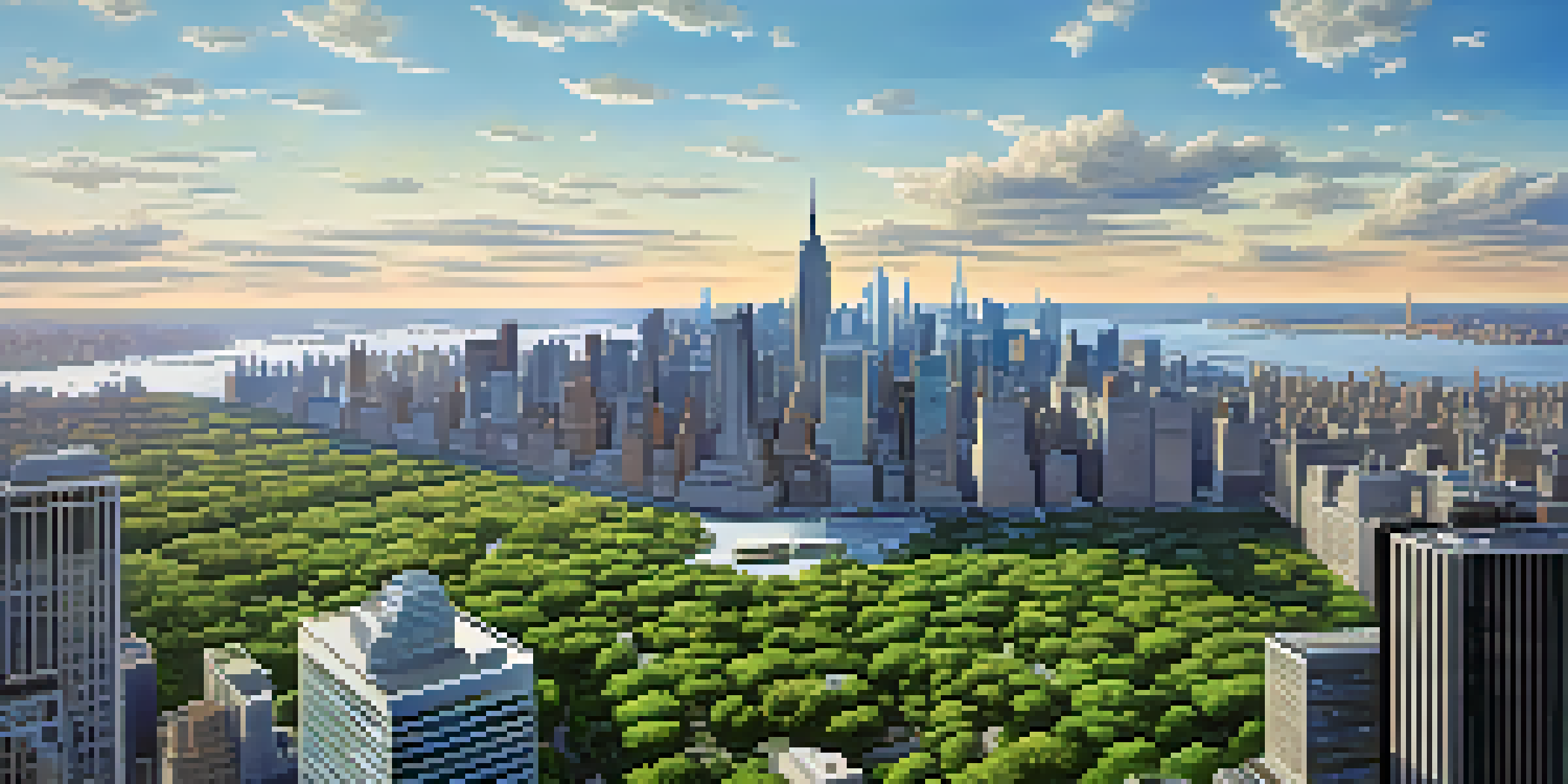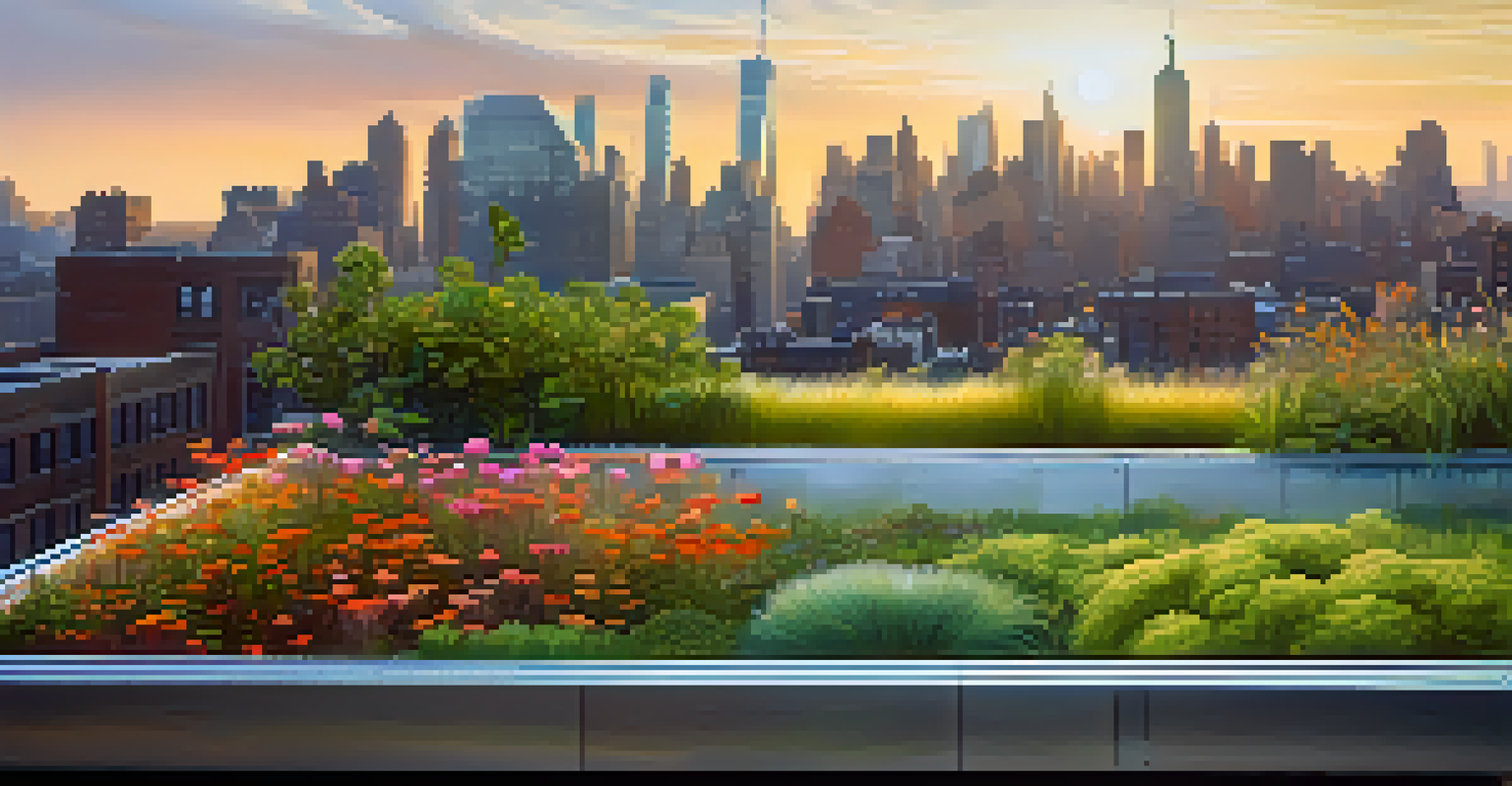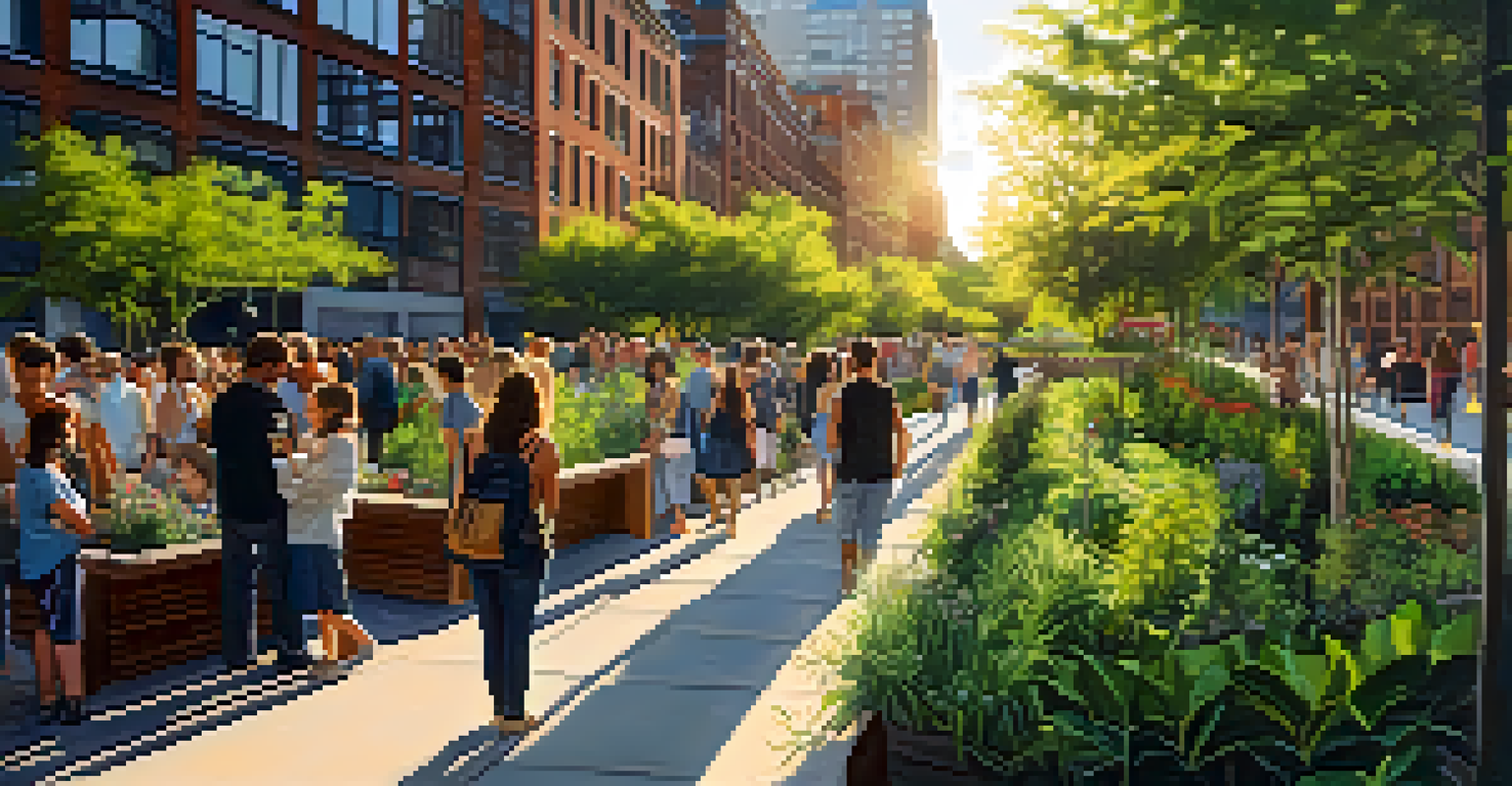Case Studies: Successful Green Building Projects in NYC

The Rise of Green Buildings in New York City
New York City is increasingly embracing green building practices, transforming its skyline and environment. These sustainable structures not only reduce energy consumption but also enhance the quality of urban living. The push for greener buildings is driven by a combination of regulatory frameworks and public demand for eco-friendly solutions.
The greatest threat to our planet is the belief that someone else will save it.
With initiatives like the NYC Energy Conservation Code and Local Law 97, developers are motivated to incorporate sustainability into their projects. These laws aim to reduce greenhouse gas emissions and promote energy efficiency, setting a precedent for other cities. As a result, green buildings are becoming a standard, not just an option.
Moreover, the benefits of green buildings extend beyond environmental impacts; they also offer economic advantages. Studies show that sustainable buildings can lead to lower operating costs and higher property values, making them attractive investments. This alignment of ecological responsibility with financial incentives creates a win-win situation for developers and the community alike.
One Bryant Park: A Landmark of Sustainability
One Bryant Park, also known as the Bank of America Tower, is a prime example of sustainable architecture in NYC. Completed in 2009, it was the first skyscraper to achieve LEED Platinum certification, the highest level of green building certification. This iconic building features an array of eco-friendly technologies, including a rainwater collection system and a cogeneration plant.

The building's design focuses on maximizing natural light while minimizing energy usage, showcasing how aesthetics and sustainability can go hand in hand. With over 1.6 million square feet of office space, it efficiently uses resources while providing a comfortable working environment. The incorporation of green roofs and terraces further enhances its environmental footprint.
Green Buildings Reshape NYC
New York City is increasingly adopting green building practices that enhance urban living and reduce environmental impact.
One Bryant Park serves not only as a corporate hub but as a testament to what is achievable when sustainability is prioritized. It has inspired other developments across the city and has set a benchmark for future projects. This building exemplifies how urban centers can evolve to meet the challenges of climate change.
The Edge: A Model for Energy Efficiency
The Edge, located at Hudson Yards, is another shining example of a successful green building project in NYC. This commercial structure is designed with energy efficiency in mind, boasting an advanced heating and cooling system that adapts to real-time weather conditions. Such innovations significantly reduce its carbon footprint and energy costs.
Sustainability is not a destination, but a journey.
Incorporating extensive glass façades allows natural light to flood the interiors, decreasing reliance on artificial lighting. The building also utilizes a greywater recycling system, which helps in conserving water resources. These features not only contribute to sustainability but also enhance the overall tenant experience.
The Edge emphasizes the importance of integrating technology with sustainability. Its smart building technologies make it easier for occupants to monitor and manage their energy usage, fostering a culture of responsibility. As a result, it stands as a pivotal example for future developments aiming for ecological integrity.
Brooklyn's Greenest: The Dock Street Project
The Dock Street Project in Brooklyn is a groundbreaking mixed-use development that showcases sustainable living. This residential and commercial space integrates green roofs, energy-efficient systems, and a commitment to reducing environmental impact. Its design encourages a lifestyle that harmonizes with nature while providing modern amenities.
A significant feature of Dock Street is its focus on community engagement, with ample public spaces and greenery that promote social interaction. This aspect is crucial in urban planning, as it enhances livability and fosters a sense of community among residents. The project reflects the growing trend of incorporating nature into urban settings.
Economic Benefits of Sustainability
Sustainable buildings not only lower operating costs but also increase property values, making them attractive investments.
Moreover, Dock Street has set a precedent for future developments in Brooklyn and beyond. Its success demonstrates that green building can be both aesthetically pleasing and functional. As more projects like this emerge, they contribute to a larger movement towards sustainable urban living.
The New School: A Commitment to Sustainability
The New School's University Center is a prime educational facility that exemplifies commitment to sustainability. Opened in 2014, it features a range of eco-friendly design elements, including a green roof and energy-efficient systems that reduce overall consumption. This building not only serves the university's educational mission but also its environmental goals.
By integrating sustainability into its curriculum, The New School further emphasizes the importance of green building practices. It engages students with real-world applications of sustainability, encouraging them to think critically about environmental issues. This educational approach fosters a new generation of leaders in sustainable design.
The University Center stands as a model for other educational institutions, demonstrating that sustainability can be a core value. Its design encourages collaboration and innovation, ultimately contributing to a greener future. The New School exemplifies how educational facilities can lead by example in the quest for sustainability.
The High Line: An Urban Green Space
The High Line is not just a park; it’s a remarkable example of how urban spaces can be transformed sustainably. This elevated linear park was built on a former railway line, showcasing the potential for repurposing existing structures. Its design incorporates native plant species and sustainable landscaping practices, creating a green oasis in the heart of Manhattan.
Visitors to the High Line enjoy beautiful gardens, art installations, and breathtaking views of the city. This unique blend of nature and urban life provides a refreshing escape and encourages community engagement. The park also promotes biodiversity, offering a habitat for various species in an otherwise concrete environment.
Future of Eco-Friendly Architecture
The future of green building in NYC is promising, with innovative technologies and community support driving sustainable development.
Moreover, the High Line has spurred economic development in the surrounding neighborhoods, proving that green spaces can have far-reaching impacts. Its success has inspired similar projects across the country, emphasizing the importance of integrating nature into urban planning. The High Line represents a shift toward a more sustainable and livable urban landscape.
Green Roofs: A Growing Trend in NYC
Green roofs are becoming increasingly popular across New York City's buildings, contributing to sustainability in multiple ways. These living roofs help to insulate buildings, reduce stormwater runoff, and improve urban air quality. By transforming rooftops into green spaces, they also provide much-needed habitats for wildlife.
The benefits of green roofs extend to the building owners as well, as they can lead to significant energy savings and reduced maintenance costs. Additionally, these spaces offer aesthetic value and create pleasant environments for occupants. They turn otherwise unused spaces into vibrant areas that enhance the urban experience.

As more buildings adopt green roofs, they contribute to a larger trend of eco-conscious design in NYC. Initiatives like the NYC Green Roof Tax Abatement Program encourage property owners to invest in these sustainable features. This momentum is paving the way for a greener, more resilient city, one rooftop at a time.
Future of Green Building in New York City
The future of green building in New York City is bright, with an increasing number of projects committed to sustainability. As climate change continues to pose challenges, the city is prioritizing innovative solutions that promote resilience and eco-friendliness. This shift is supported by both governmental policies and community advocacy for sustainable practices.
Emerging technologies, such as smart building systems and renewable energy sources, are set to revolutionize the construction industry. These advancements will make it easier for developers to create efficient, sustainable buildings that meet the demands of modern urban life. As a result, NYC is well on its way to becoming a leader in sustainable architecture.
In conclusion, the success of green building projects in NYC demonstrates a collective commitment to creating a sustainable future. By learning from existing case studies and embracing innovative practices, the city can inspire others to follow suit. As we move forward, the transformation of New York City's skyline will not only reflect architectural beauty but also a dedication to environmental stewardship.